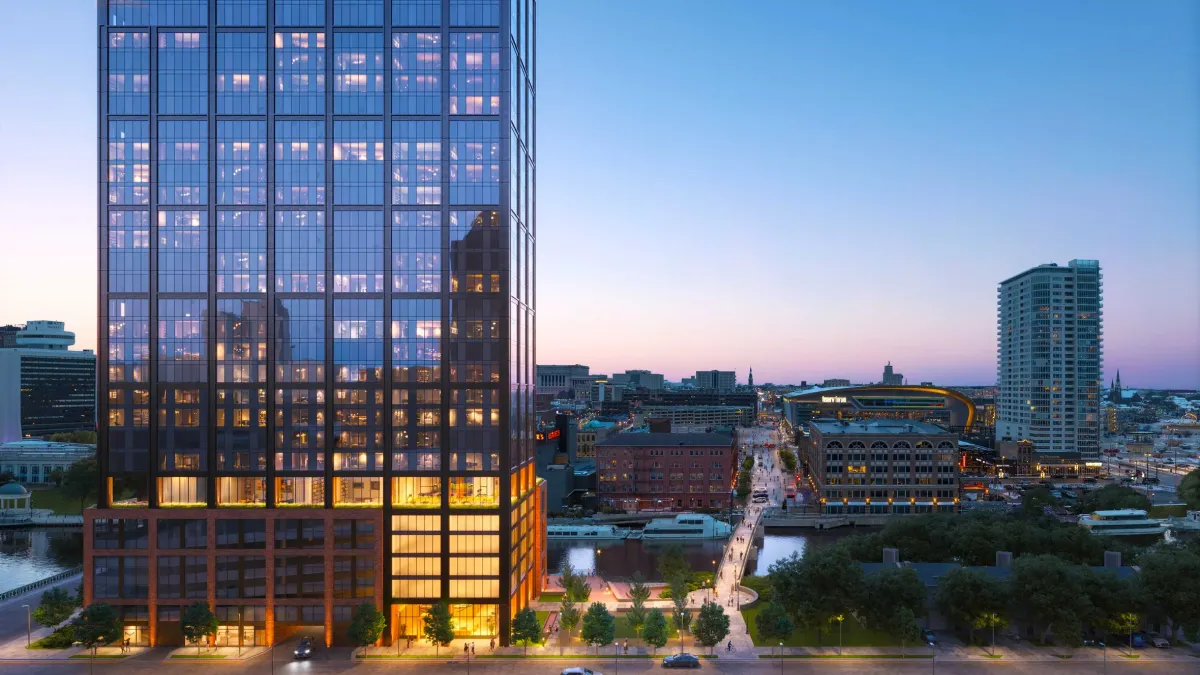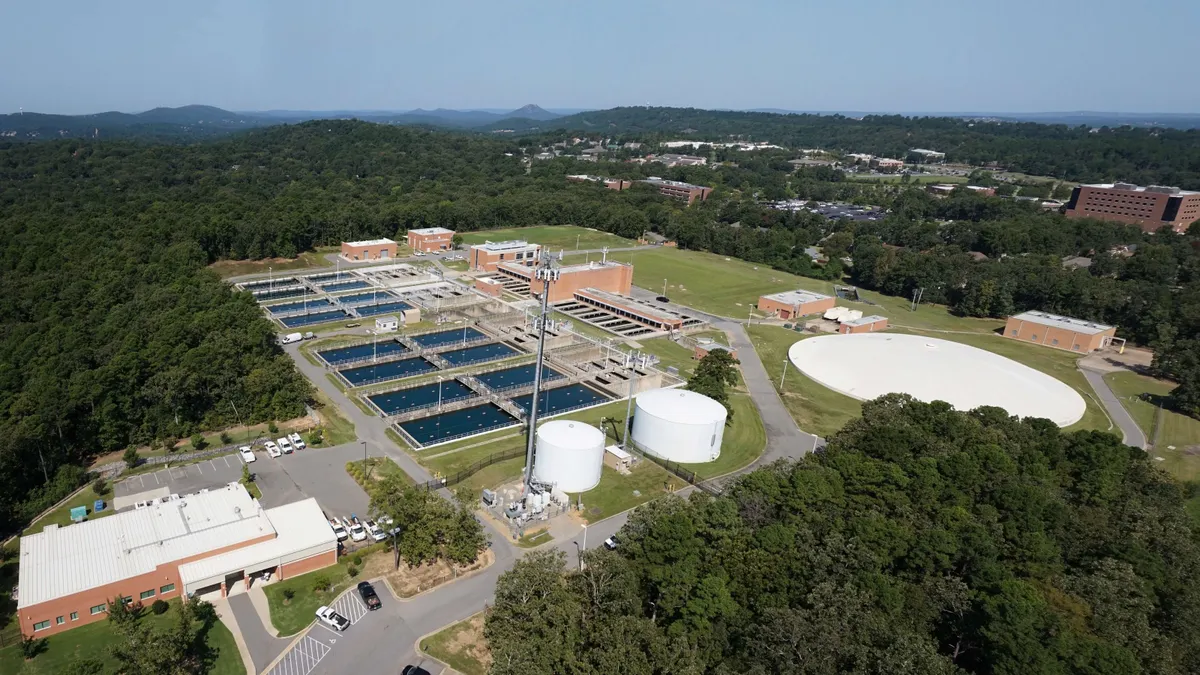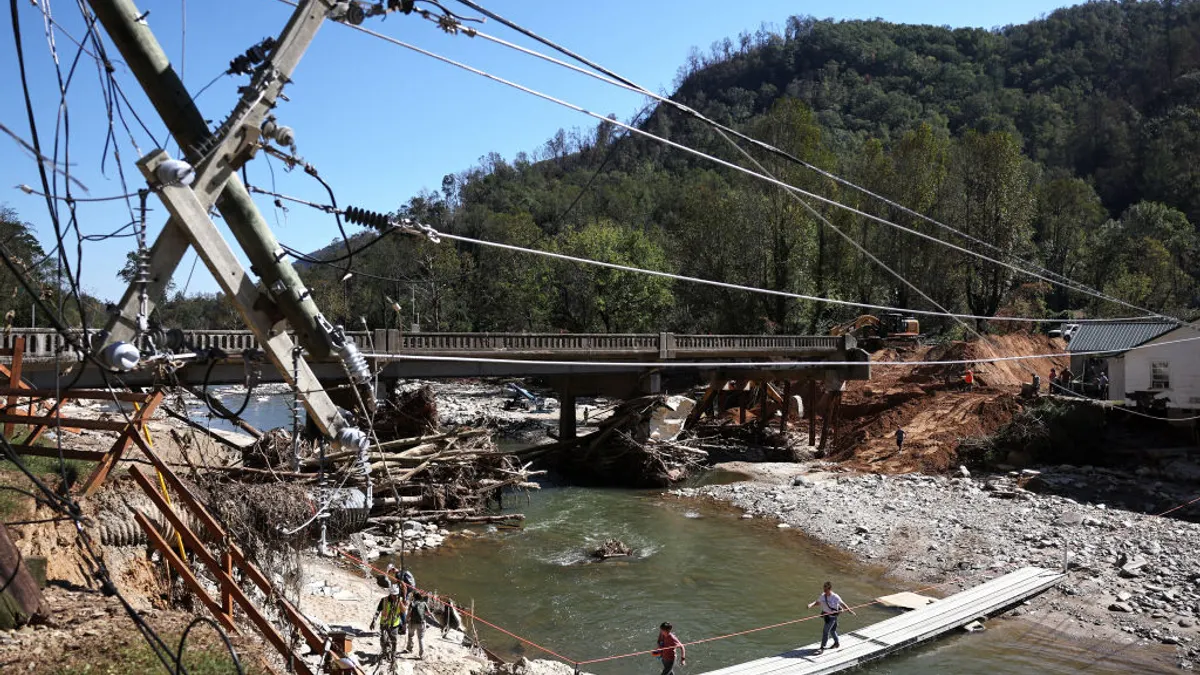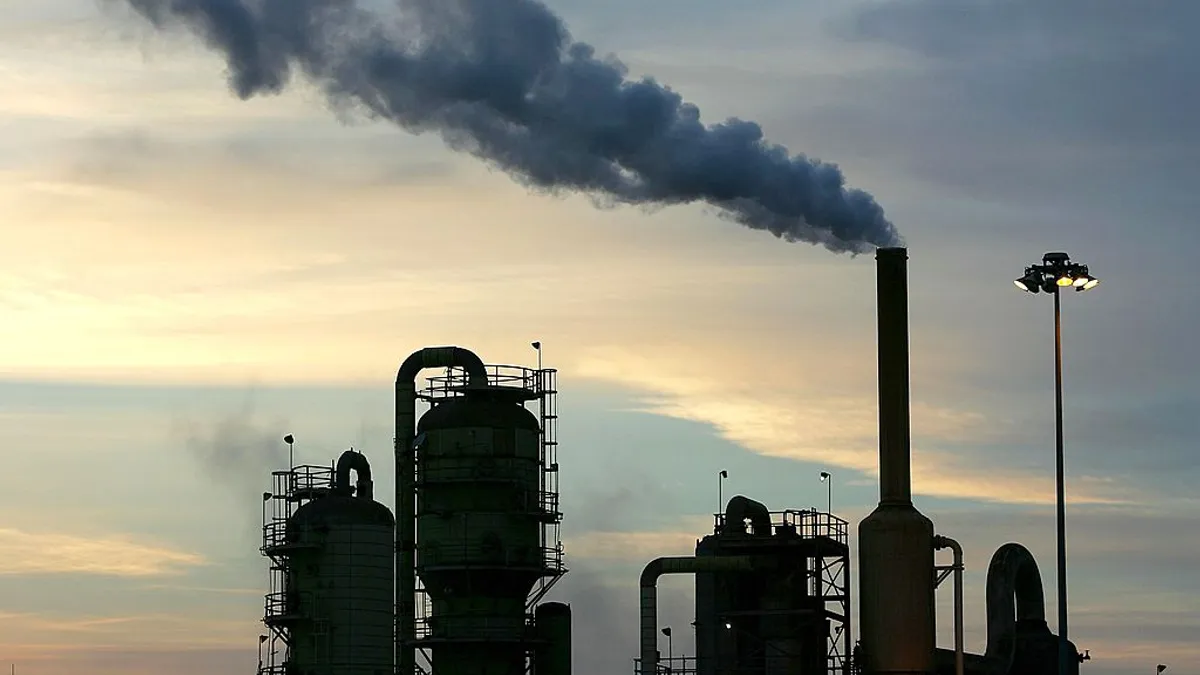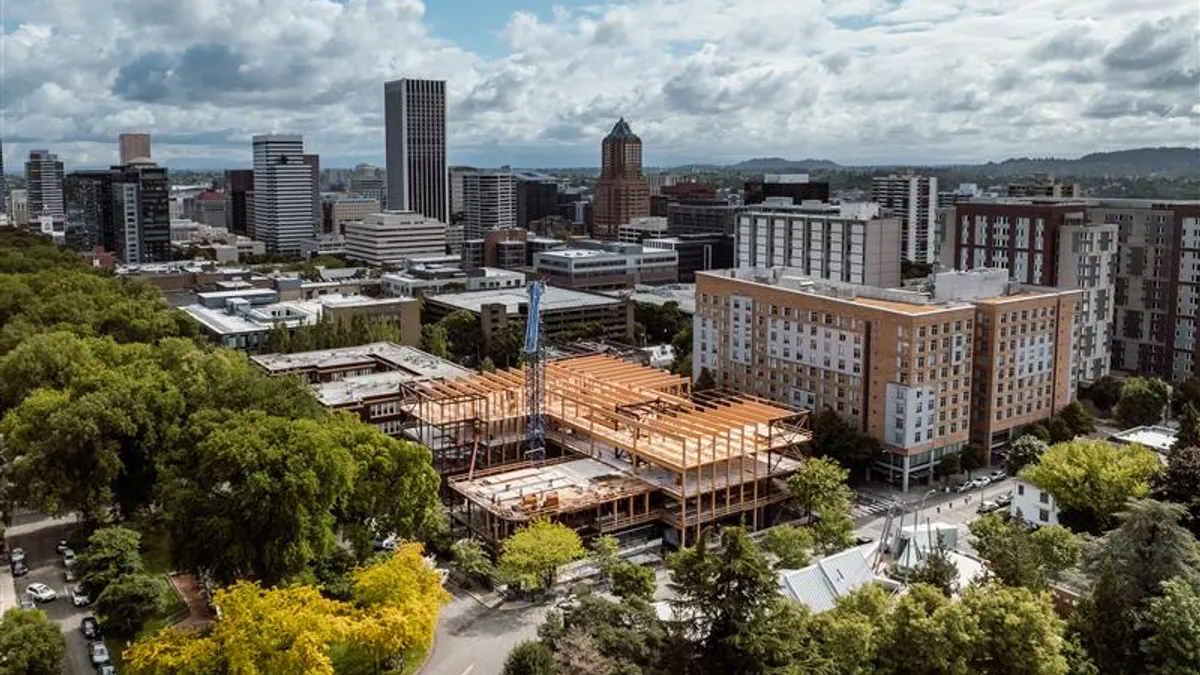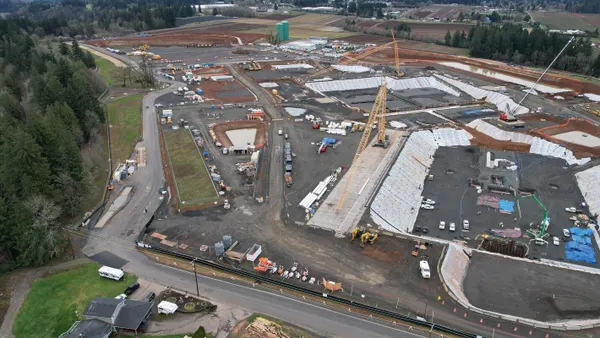Green roofs seem to be sprouting up all over the place.
In fact, some high profile green roof projects have been garnering major media attention lately. Facebook’s new office building in Menlo Park, CA, features a nine-acre green roof with a walking path and more than 400 trees. A defunct Silicon Valley retail space, the Vallco Shopping Mall in Cupertino, CA, is also in the news with its plans for a $3 billion makeover, at the center of which is a 30-acre green roof — which will be the largest green roof in the world. Designed as a community park, the roof will include an orchard, vineyard, almost four miles of trails.
Attorney John-Patrick Curran — of Sive, Paget & Riesel P.C. in New York City, who advises major developers about a wide variety of environmental issues, including regulations around green roofs — told Construction Dive the concept is really nothing new. In fact, he said, Washington, DC, has been using green roofs on public and commercial buildings for nearly a century.
"Some of the buildings have green roofs that haven’t been replaced since the 1930s," Curran said.
Green roof elements
So what is a green roof exactly? There are two basic types of green roofs — intensive and extensive. An extensive green roof system uses low-lying plants, creates a light roof load and requires less maintenance than its high-profile counterpart, the intensive green roof, which can include trees, shrubs and heavier architectural features. Both types are most easily installed on flat roofs.
Once a standard roof is in place, up to the waterproof membrane, according to Michael Whitfield, owner of Green Roof Outfitters (GRO) in Charleston, SC, then the green roof installation can begin via a traditional or modular system. Traditional systems require an experienced installer to stack a drainage mat, root layer, soil, and, finally, the plants on the existing roof. Modular systems, however, like GRO's, come in self-contained trays, fully planted, and ready to place anywhere.
A modular system, Whitfield told Construction Dive, allows a faster, neater install and is much easier to remove in cases of redesign or if someone needs to get at the underlying roof structure for repairs; but either system will provide the benefits.
As for licensing or building codes, neither Curran nor Whitfield have encountered any special requirements for green roofs, since the structural elements are already in place before the green roof installation.
"There are no real specific codes associated with those things," Curran said, "other than, of course, the general need to have them not fly off the roof."
In addition, the extensive green roof — the most common version — Whitfield said, features low-profile plants installed in such a way that make them a permanent feature of the building, no more likely to get airborne during a storm than grass or plants on the ground.
Growing popularity
Aesthetics are obviously a big factor in deciding to install a green roof, but what else makes them so popular?
According to Whitfield, a green roof will last 200%-400% longer than a standard roof. And, Curran said, owners can see energy and stormwater control savings that pay for the cost of the roof in as little as five to six years.
Green roof buildings can generate energy cost savings of 25%-50%, according to Whitfield, and can reduce wear and tear on roof-placed equipment, which benefits from the cooling effect from the plants.
But the biggest payoffs are the tax and fee incentives that many cities, including Austin, TX, Baltimore, New York, Philadelphia, and Washington, offer because of a green roof's ability to control stormwater runoff. Whitfield said the average green roof absorbs 50%-65% of average rainfall in most places, and this can save a city millions in stormwater improvements.
"They have tax incentives that help pay for it," Whitfield said, "so that’s why they do millions of square feet [of green roofs] in those cities."
What's holding them back?
With all of these benefits, why aren’t more building owners taking advantage of green roofs? Both Curran and Whitfield agreed that a lack of education about green roofs is preventing a wider implementation of the concept.
"It sounds to many like a headache," Curran said. "And I think there’s been some negative information out there about the difficulty of maintaining, the cost of maintaining, and the cost of installing them."
As for cost, Whitfield said, a typical extensive green roof system, which makes up 80% or more of all green roofs, costs between $12-$20 per square foot, including installation.
The reality, though, Curran said, is that while green roofs might cost more initially, the cost savings from energy and tax incentives can minimize that extra expense.
Whitfield said the key to wider use is getting the real data about cost, maintenance, and green roofs' effect on stormwater runoff and energy consumption into the hands of the true decision makers — architects, landscape architects, engineers and municipal officials — so that green roofs can be more regularly included in building design.
Whitfield, however, would like people to learn about the intangibles that go hand-in-hand with a green roof as well.
"It increases worker productivity, and it’s a quality of life issue for hospital patients. They might need less pain meds and get out of the hospital faster. There are all these other side benefits," he said. "Endangered bee and butterfly populations — this helps create habitat for them. There are just a lot of benefits people don’t even think about."







